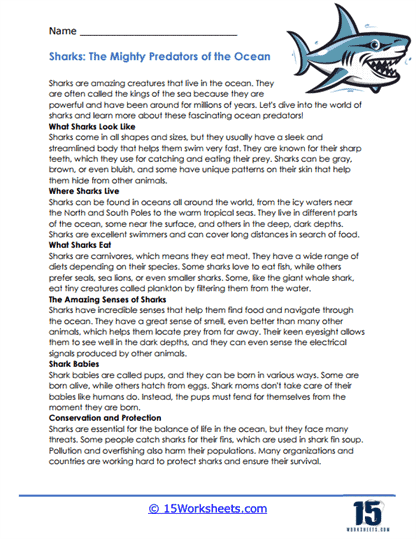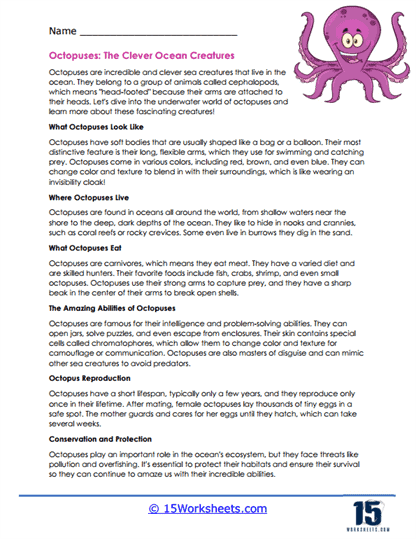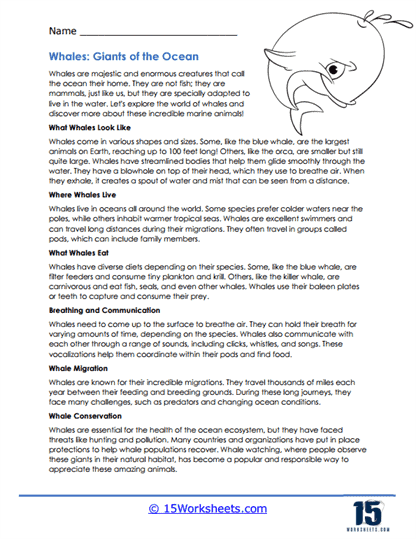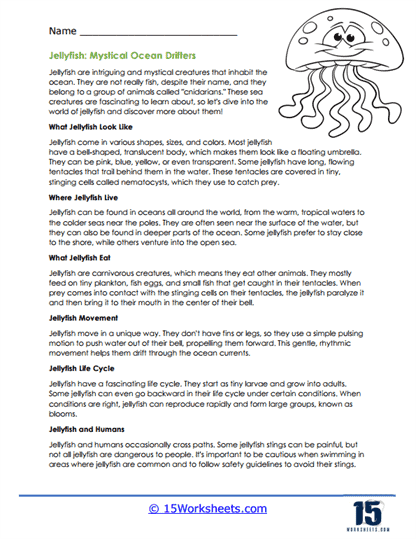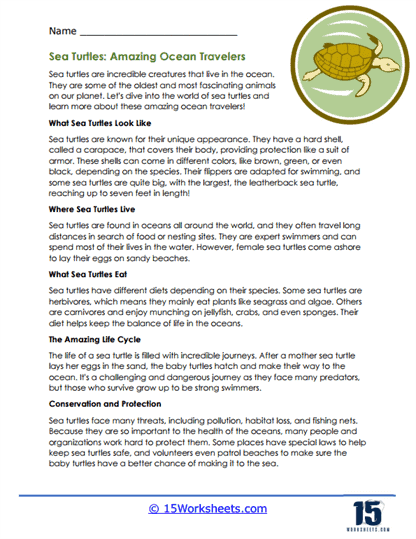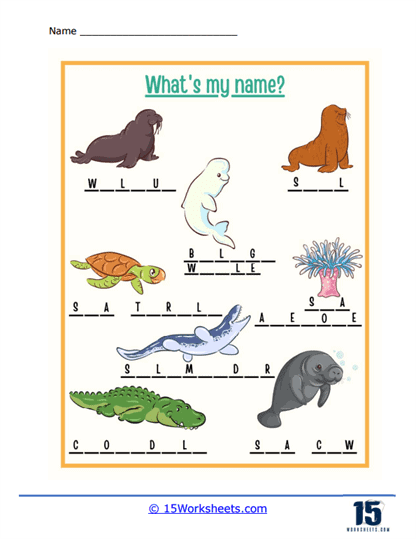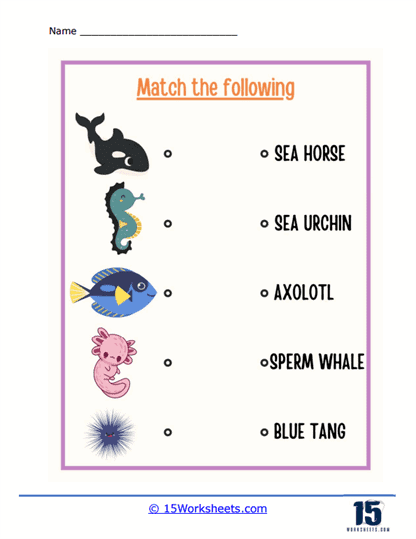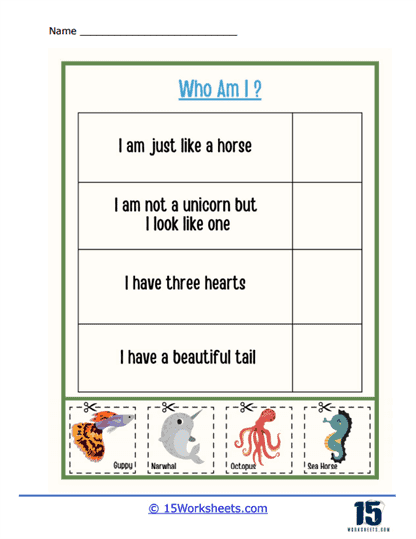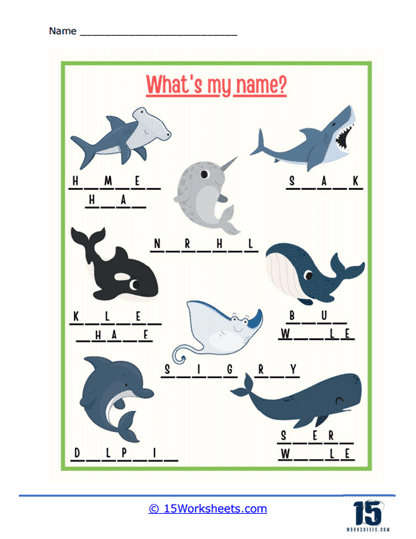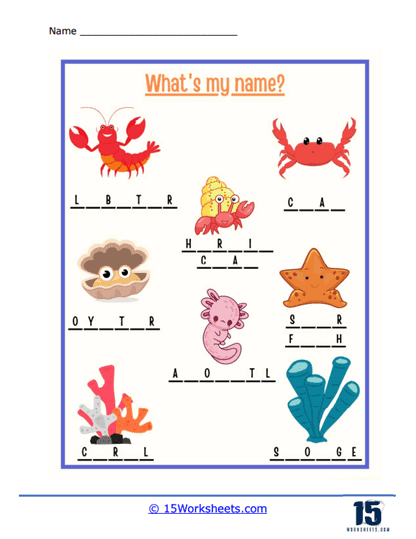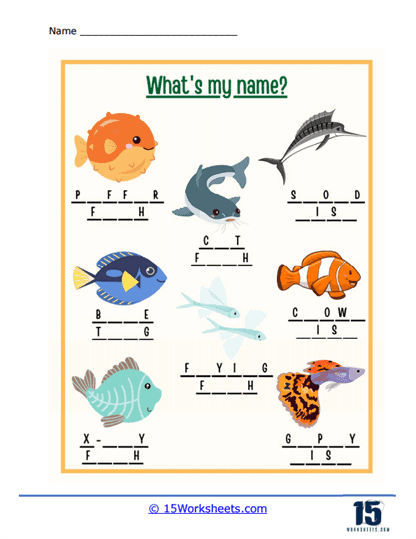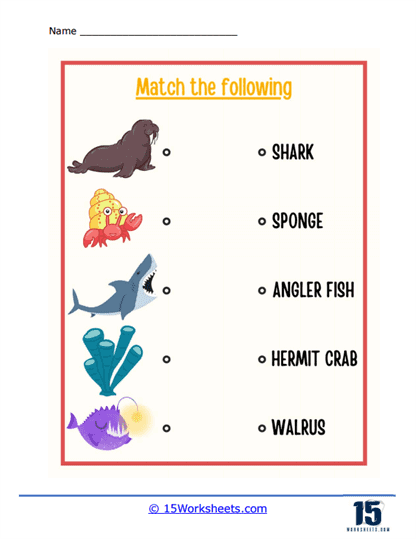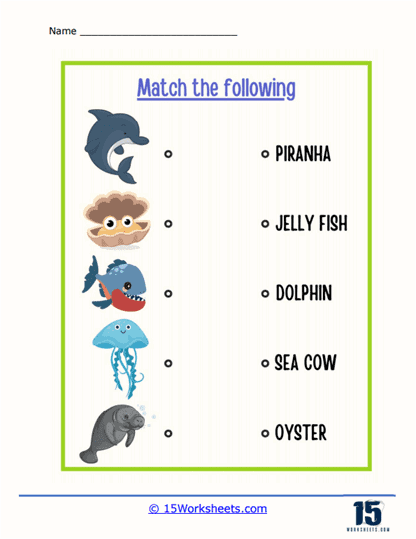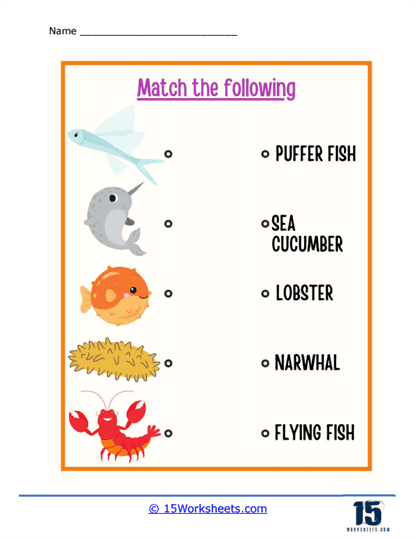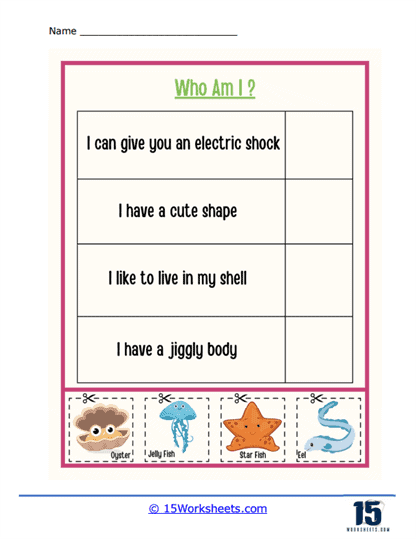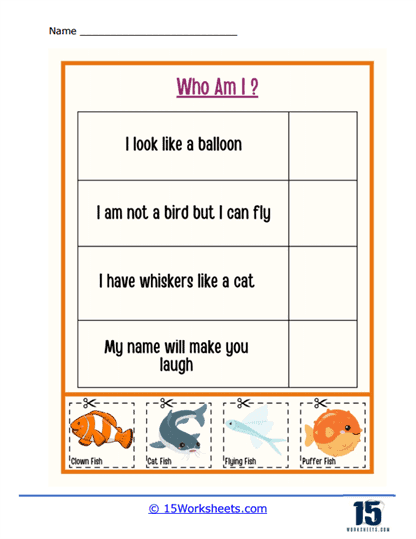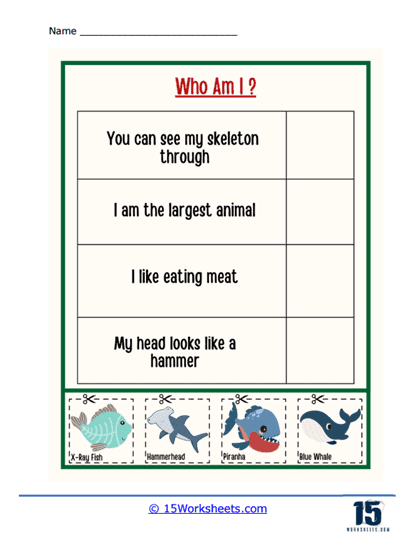Ocean Animals Worksheets
All About These 15 Worksheets
This collection of 15 worksheets is designed to help students learn about ocean animals in an engaging and interactive way. The exercises focus on identifying and matching ocean animal names to their pictures, with some worksheets requiring students to add the missing letters to their names. There are also worksheets that feature descriptions of various ocean animals, asking students to match them to the correct name.
As these worksheets provide information on ocean animal characteristics, habitats, and behaviors, students are encouraged to learn more about these fascinating creatures. These worksheets are designed to be suitable for students of different ages and proficiency levels in English and can be used as classroom activities or as homework assignments. By engaging with these worksheets, students can develop their knowledge of ocean animals, improve their vocabulary and language skills, and foster an appreciation for the marine environment.
What Animals Are Found in the Ocean?
The ocean is home to an immense variety of animals, ranging from microscopic organisms to the largest creatures on Earth. These marine animals have adapted to thrive in diverse oceanic habitats, including the sunlit shallows, the vast open ocean, and the deep sea. Some examples of animals found in the ocean are:
Fish
There are thousands of fish species inhabiting the world’s oceans, including familiar species like tuna, salmon, and clownfish, as well as more exotic species like anglerfish and deep-sea lanternfish.
Mammals
Marine mammals include cetaceans (whales, dolphins, and porpoises), pinnipeds (seals, sea lions, and walruses), sea otters, dugongs, and manatees. These air-breathing animals have evolved various adaptations to live in the ocean, such as streamlined bodies, insulating layers of blubber, and specialized limbs or flippers.
Reptiles
Some reptile species have adapted to marine environments, including sea turtles, sea snakes, and marine iguanas. Sea turtles are especially well-adapted to life in the ocean, with their streamlined shells and paddle-like flippers.
Birds
Seabirds, such as albatrosses, gulls, penguins, and pelicans, depend on the ocean for food and often spend significant portions of their lives at sea. Penguins are flightless birds that are highly adapted to life in the water, using their wings as flippers to propel themselves while swimming.
Invertebrates
The majority of marine animals are invertebrates, which include a vast array of organisms like mollusks (e.g., octopuses, squids, and clams), crustaceans (e.g., crabs, lobsters, and shrimp), cnidarians (e.g., jellyfish, corals, and sea anemones), echinoderms (e.g., sea stars, sea urchins, and sea cucumbers), and many others.
Sharks and Rays
These cartilaginous fish are characterized by their skeleton made of cartilage rather than bone. They include a wide variety of species, such as great white sharks, whale sharks, manta rays, and stingrays.
Plankton
Plankton are tiny, often microscopic organisms that drift in the ocean currents. They include phytoplankton (plant-like, photosynthetic organisms) and zooplankton (tiny animal-like organisms), which form the base of the marine food web.
These examples represent only a fraction of the incredible diversity of animals found in the ocean. The ocean is still a largely unexplored frontier, and new marine species continue to be discovered, enhancing our understanding of the vast array of life that inhabits this vast and complex ecosystem.


